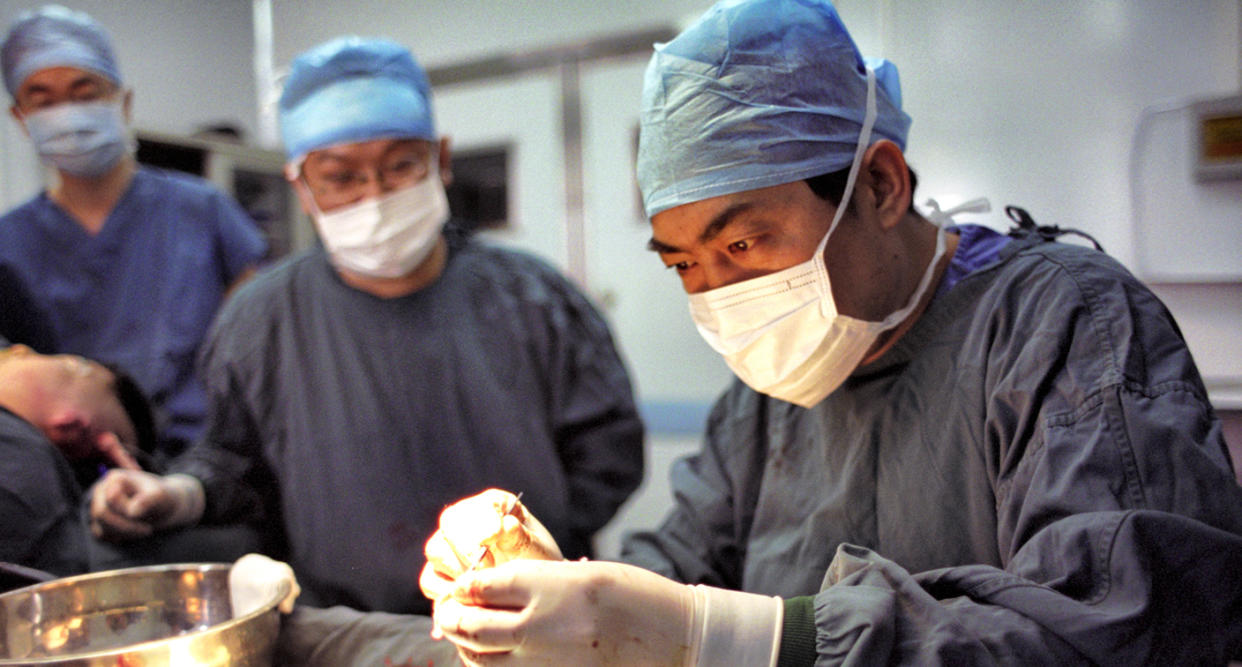This woman's face transplant is failing — what does that mean?

A woman who received a face transplant, which had given her a new lease on life, is now hoping for a second surgery, as it appears the transplanted tissue is dying.
Carmen Blandin Tarleton, 51, received a facial transplant in February 2013, after her estranged husband beat her with a baseball bat and then doused her with industrial-strength lye in June 2007, leaving her with burns over 80 percent of her body. (The ex-husband died while serving a 30- to 70-year prison sentence, according to the Associated Press.) The registered nurse and mother of two had a full face transplant surgery at Brigham and Women’s Hospital.
While Tarleton and her surgeons have dealt with her body trying to reject the facial tissue before, they managed to treat it in the past. That all changed last month when doctors discovered that several blood vessels in her face had narrowed and closed, reducing the blood supply and causing the tissue to die, according to the Los Angeles Times.
“The deep vessels that supply blood to Carmen’s face have been injured as a result of chronic rejection,” Brigham and Women’s Hospital, where Tarleton’s facial transplant surgery was performed, said in a statement sent to Yahoo Lifestyle. “This injury has caused scarring of the blood vessels, which means that circulation of blood to certain tissues of the transplanted face is diminished. As a result, some tissue on Carmen’s face has become necrotic, or begun to die, which has resulted in wounds on her face.”
The hospital added: “The clinical team is working closely with Carmen, a former transplant nurse herself, to determine the next steps in her care. She will be monitored closely, with the hope that the wounds will heal.”
Facial transplantation — which has only been performed 40 times worldwide as of 2018, according to the Cleveland Clinic — is an incredibly complex and lengthy surgery. “This is the ultimate reconstructive procedure,” Brian Gastman, MD, a transplant surgeon at Cleveland Clinic (the first hospital in the U.S. to perform a near-total face transplant in 2008), tells Yahoo Lifestyle.
As with any transplant, there is a risk of rejection. “There is going to be a number of patients [who] are going to have issues that might require a retransplantation, but not all of them will,” says Gastman.
Even if the transplanted tissue isn’t rejected for years, however, that can change. “It’s really not realistic to hope faces are going to last [the patient’s] lifetime,” Bohdan Pomahac, MD, director of plastic surgery transplantation at Brigham and Women’s Hospital and one of Tarleton’s surgeons, told the Boston Globe.

There are several reasons why face transplants fail. As in Tarleton’s case, one reason is the blood vessels in the face become restricted or close entirely, so “there’s no blood supply to the tissues and the tissue will fail or die,” explains Gastman.
In other cases, the immune system can start to attack the transplanted tissue. “The immune system is designed to kill foreign things, but not kill yourself, meaning autoimmunity,” explains Gastman. Immunosuppression drugs are designed to prevent the immune system from attacking the transplanted tissue. But the drugs themselves can also have side effects, affecting a person’s kidneys and liver or leading to other serious infections, Gastman explains. “So there’s a fine balance between that,” he says.
He continues: “Clearly, we’re doing a good job of that for the first five years [post-transplant] with [the immune system] not attacking the transplants or having terrible infections in patients. But eventually, you can get enough holes popping through that roof, that the immune system will start attacking that transplant.”
Gastman adds: “Everybody needs to understand that this is an area that we’re still learning. We’re going to all learn from these cases.”
As far as what’s next for Tarleton, Brigham and Women’s Hospital said: “Alternative options include skin grafting and reconstruction, and potentially being re-evaluated for a second face transplant. The clinical team remains focused on maintaining Carmen’s quality of life, which has been much improved since her transplant six years ago.”
Gastman — who says it’s especially challenging to find a good donor match that’s a Caucasian women in the same age range as Tarleton — estimates it could take anywhere from two weeks, if Tarleton is lucky, to six months to find the right donor in case she needs a second transplant surgery.
But for the small number of patients who receive a face transplant, the results can be “life-saving.” Explains Gastman, “Somebody like this would not have lived long.” Out of all of the different transplant surgeries, “the face is the one that’s much more likely to be life-sparing,” he says.
Rather than being “shunned by society,” says Gastman, facial transplant patients can go on to live full lives.
Adds Gastman: “We’re giving them hope.”
Read more from Yahoo Lifestyle:
Woman in semi-comatose state after using skin cream from Mexico
Popular heartburn drug may be tainted with cancer-causing chemical
Follow us on Instagram, Facebook and Twitter for nonstop inspiration delivered fresh to your feed, every day.

